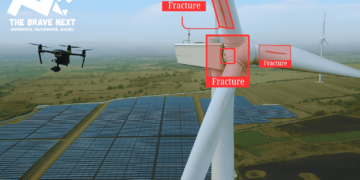Introduction to Coblation Surgery
Coblation adenoidectomy and coblation adenotonsillectomy are modern ENT surgical techniques designed to remove adenoids and tonsils with minimal tissue damage. Unlike traditional methods that use heat or sharp instruments, coblation uses radiofrequency energy and saline to gently dissolve the tissue at relatively low temperatures. This advanced approach reduces pain, bleeding, and recovery time, making it a preferred option among ENT specialists.
Whether your child suffers from chronic snoring, breathing problems, or recurrent infections, understanding the coblation procedure is key to making informed decisions about their treatment.
What Is Coblation and How Does It Work?
Coblation stands for controlled ablation. This technique transforms radiofrequency energy into a plasma field, which dissolves soft tissues at low temperatures (around 40-70°C). This is much lower than the 400–600°C of traditional electrocautery methods.
Why Choose Coblation Over Traditional Methods?
-
Less bleeding due to precise targeting
-
Minimal thermal damage to surrounding tissues
-
Faster recovery time, especially in children
-
Lower post-operative pain
Step-by-Step Procedure of Coblation Adenoidectomy
Coblation adenoidectomy is typically performed in children who experience:
-
Chronic nasal congestion or breathing difficulties
-
Sleep apnea
-
Recurring ear or sinus infections
The Procedure
-
Pre-operative Assessment
A detailed examination including endoscopy, imaging, and medical history is done. -
Anesthesia
General anesthesia is administered for a pain-free experience. -
Coblation Wand Insertion
A specialized coblation wand is inserted through the mouth to access the adenoid tissue. -
Tissue Dissolution
Using radiofrequency and saline, the wand gently dissolves the adenoid tissue with minimal bleeding. -
Suction and Irrigation
Debris is suctioned out, and the site is irrigated with saline to clean the area. -
Monitoring and Recovery
The patient is observed in a recovery room and usually discharged the same day.
Coblation Adenotonsillectomy – Dual Removal of Tonsils & Adenoids
Coblation adenotonsillectomy combines adenoid and tonsil removal in a single, minimally invasive procedure. It’s commonly recommended when both adenoids and tonsils are enlarged or infected frequently.
Indications for Coblation Adenotonsillectomy
-
Obstructive sleep apnea
-
Frequent throat infections
-
Chronic tonsillitis
-
Speech or swallowing issues
Procedure Highlights
-
Duration: 30–45 minutes
-
Hospital Stay: Daycare procedure (no overnight stay)
-
Post-Surgery Diet: Soft foods, cold liquids recommended
-
Recovery Time: 7–10 days for most children
Aftercare and Recovery Tips
Post-operative care is crucial for optimal healing. Here’s what to keep in mind:
-
Pain Management: Use prescribed medications only
-
Hydration: Encourage plenty of fluids
-
Diet: Avoid spicy, crunchy, or hot foods for a week
-
Rest: Limit physical activity for at least 5–7 days
Internal Link Tip: Link to your ENT Services page or Adenoidectomy FAQs blog to keep users engaged on your website.
Frequently Asked Questions (FAQs)
Is coblation safer than traditional methods?
Yes, coblation causes less damage to surrounding tissues and reduces the risk of complications.
Is general anesthesia necessary for coblation adenoidectomy?
Yes, general anesthesia ensures a safe and pain-free procedure, especially for children.
How long does it take to recover?
Most patients recover within 7–10 days, but full recovery may take up to 2 weeks.
Trust Coblation for a Safer, Faster Recovery
Coblation adenoidectomy and coblation adenotonsillectomy are game-changing procedures in pediatric and adult ENT care. With significantly reduced post-operative pain, faster healing, and minimal risks, this method offers a smoother path to recovery for those suffering from obstructive breathing or chronic infections.
Final Thoughts and Call to Action
If you or your child are experiencing ongoing throat or nasal issues, coblation adenoidectomy or coblation adenotonsillectomy might be the safest and most effective solution. Consult an experienced ENT specialist to assess your needs and determine the best treatment approach.
✅ Book a consultation today with our certified ENT surgeon and take the first step towards healthier, easier breathing!



























